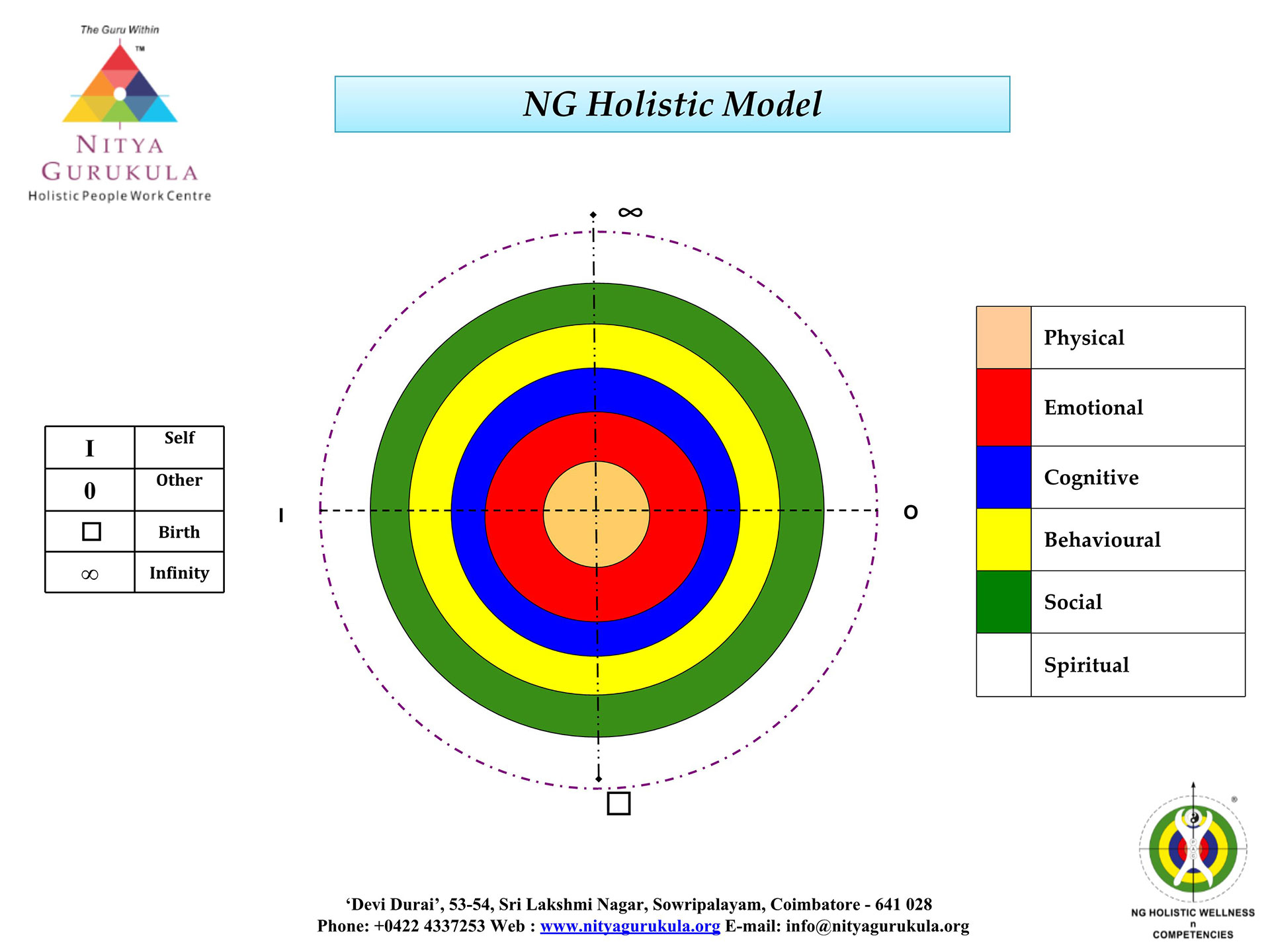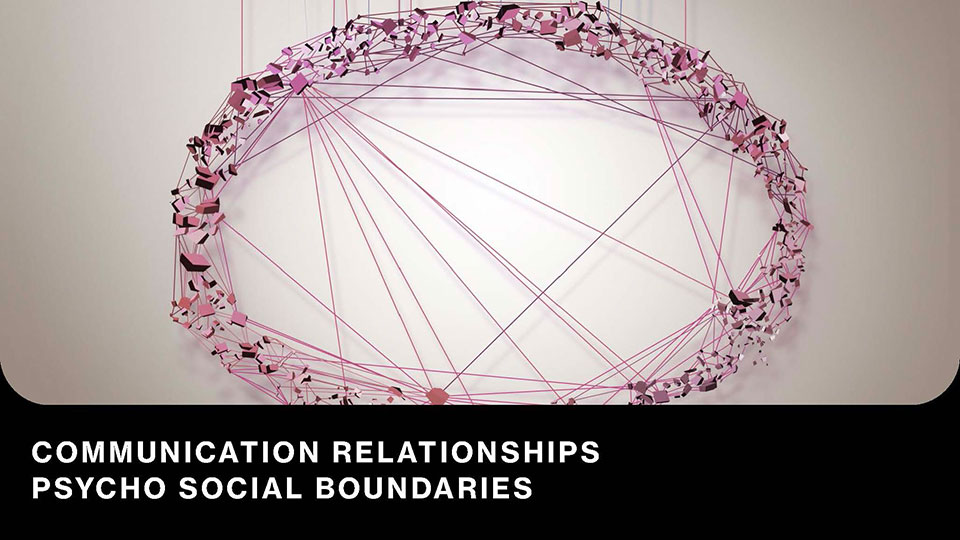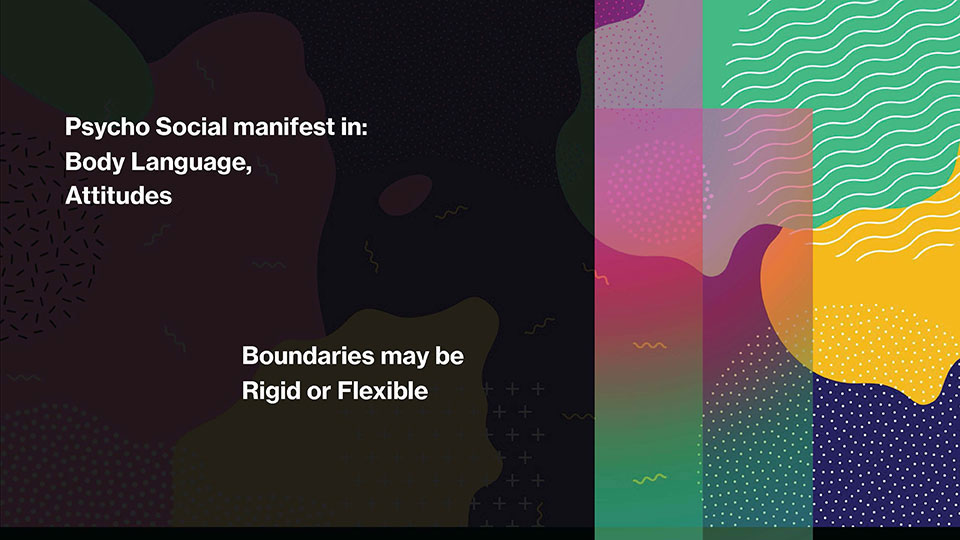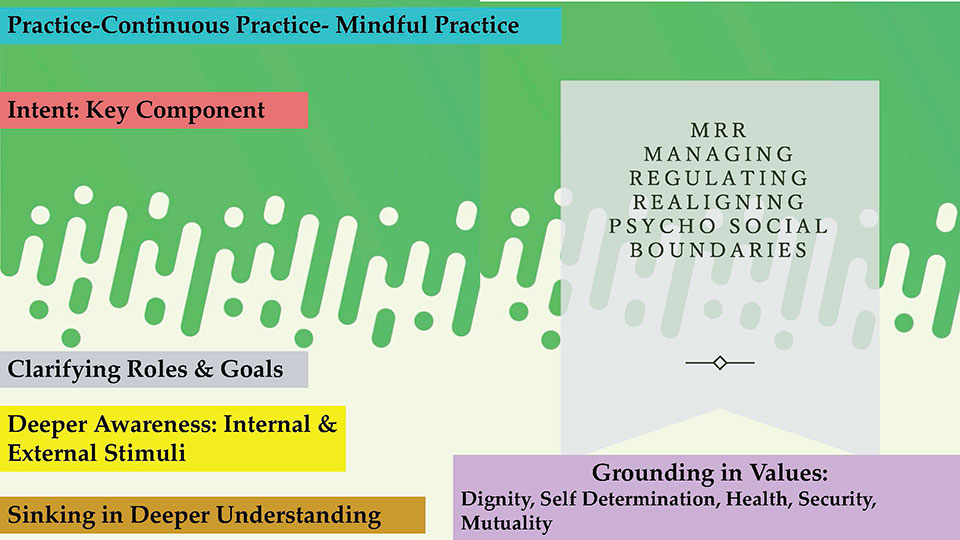Boundaries: Psycho-Social boundaries-Contd.
Dear Readers, Welcome to SC Musings Blog 9,
I come to you with Blog 9 after 3 packed weeks- an extra week in between due to the election holiday. Beginning my journey to Bengaluru on the 6th April, proceeded to Shirdi and Chennai, and came back to Coimbatore on the 12th night by the Vande Barath, train. Then came the immersion in NG workshops, training and operations; Training in Taichi for Energy with Master Trainers Kartikey & Sylvia and the Grand Master (my title) Dr. Lam was the highlight. Energy flows, tiredness recedes and learning accelerates in Dr. Lam’s (even online) presence.
In Blog 9 we will:
- Re-visit and summarize Psycho-Social boundaries
- Explore connections between boundaries, communication and relationships and
- Identify strategies for regulating and managing our boundaries, effectively and efficiently.
Re-visiting and summarizing
We have journeyed through Psycho-Social boundaries using the NG Holistic Model of a Human Being, Ego States, and my narrative. Here I am recalling a few significant features of Psycho-Social boundaries:
“Boundaries between the layers in the NG Holistic Model are useful for enhancing our self-awareness; this happens when we become conscious of our feelings like anxiety, fear, anger, sadness etc. and name these feelings. When the boundaries are enmeshed, we are totally unaware of what’s happening within, and how we are impacting others and the context… A free flow of energy between the 6 layers in time and space contributes to a well-balanced person, who is comfortable with Self, sensitive to Others, and in tune with the Environment”
“Physical boundaries indicate ownership, and serve to contain and control entrances and exits…However, Psycho-Social boundaries are often intangible and not clearly defined. They are determined biologically, socially, and culturally and change over time…Clinging to these boundaries over time often result in unpleasantness and pain, stunting growth and development.” (Musings, March, 2024).
“Our emotional expression is determined by our social conditionings and the reverse also takes place; that is, we interpret social norms and adapt them to suit our psychological propensities.” (Musings, April, 2024).

Communication-Relationships-Psycho Social Boundaries

Let’s delve into how Psycho-Social boundaries determine our communication and relationships, with 2 case-studies.
Anand* grew up learning to value his siblings more than himselfthis value was infused in him by his parents and tradition. After marriage, when his children came into the scene, Anand’s struggles began. He had to choose between taking care of his family or attending to his siblings; this intense struggle plunged him into a deep clinical depression. Medication, counselling, his efforts and immediate family’s support, helped Anand manage and then totally transcend his depression.
Task oriented and powered by ambition to be independent and succeed, Rani* was a successful professional. However, she lived alone, and longed for companionship after her children moved out and husband passed away. Rani felt her emptiness acutely, and tried to connect with a few people around. However, the gap between her and those around seemed very huge to bridge, so she somehow dragged on in life.
Meek and submissive, Anand’s body language and appearance indicated vulnerability, and came out in his communication as helplessness. Hunched shoulders and sad eyes added to his sense of victimhood. Feeling one down in relationships, especially with his siblings, Anand desperately craved understanding. However, with difficulty he learned the importance of Psycho-Social boundaries to protect his own family and himself. Anand’s relationships with his wife and children improved as alignment of his Psycho-Social boundaries changed. He also began to experience peace and happiness, and moved out of victimhood. The temptation to slip into his boundary less patterns still lurks, reported Anand, but, he has learnt strategies to recognize and move beyond.
Rani on the other hand was experienced as out-spoken and aggressive, which distanced even her close family members; boundaries became barriers, isolating her. She displayed control and power in her communication, which was seen as rigidity. Rani’s rigid boundaries spilled out in her communication, even when she attempted to be flexible.
We can now see that Anand’s boundaries were lax while Rani’s were firm and uncompromising, which in turn reflected in their communication and relationships.
Strategies: Managing, Regulating, Realigning Boundaries
Moving on to strategies to manage and regulate boundaries seems like a humongous task. I am not talking about the process of MRR Managing, Regulating and Realigning, but encapsulating them into points in this Blog 9.
Yes, MRR is a relatively simple and uncomplicated process- so where is the difficulty? Why did Anand struggle for years with depression and victimhood? Why is Rani still struggling in relationships? Here is a simple, straight and to the point answer.
MRR is experienced as difficult and a struggle because our PsychoSocial memories become deeply embedded in our Physical layers (NG, 2024) where logic, learning and education do not penetrate easily. These memories translate into Behaviours, which in turn draws the Spiritual layer; total energy of the human system is engaged in maintaining status quo, which is what is commonly known as the comfort zone.
Moving away from the comfort zone feels like a loss of identity to most of us, and that is the real difficulty.

Coming to my narrative, I woke up to the reality of managing Psycho-Social boundaries in late adulthood and the realigning process continues. Founded on my experiences, understanding and application, am herein presenting strategies for Managing, Regulating and Realigning – MRR Psycho Social boundaries.
- Let’s get deeper in sinking in and understanding Psycho Social boundaries
- This leads to a deeper awareness of our responses, reactions to internal and external stimuli. These could be mind voices, habitual reactions or communication from others in our environment,
- Clarifying our roles and goals follow. These can be categorised as personal, professional and organizational roles and goals.
- When clarity emerges, intent, that is the key component for MMR needs to be identified and continuously honed or sharpened,
- Practice, regular practice and continuous mindful practice grounds us in basic values- dignity, self-determination, health, security and mutuality (ITAA, 2014). These values form the foundation for MRR.

Taichi, Transactional Analysis and Yoga are some of the ways to operationalise MRR.
Dear Readers, Are You Ready to begin MRR??? It’s never late… I will see you in Blog 10 with the theme Connection and Connecting, a theme close to Psycho-Social boundaries.

* Name changed to protect identity
References
Boundaries, 22nd March,2024. https://www.nityagurukula.org/sc-musings/boundaries-psycho-social-boundaries/
Emotional Expression, 5th April, 2024. https://www.nityagurukula.org/sc-musings/boundaries-psycho-social-boundaries-contd/
International Transactional Analysis Association. (2014). Code of Ethical Conduct and Ethics Procedures Manual. Retrieved from: https://membersarea.itaaworld.com/sites/default/files/itaa-pdfs/gov-admin-docs/12-5-14%20Revised%20Ethics_0.pdf